Acute close angle glaucoma. Acute Angle-Closure Glaucoma (AACG): Causes, Symptoms, and Treatment Options
What are the main risk factors for acute angle-closure glaucoma. How is acute angle-closure glaucoma diagnosed and treated. What preventive measures can be taken to avoid acute angle-closure glaucoma.
Understanding Acute Angle-Closure Glaucoma: A Comprehensive Overview
Acute angle-closure glaucoma (AACG) is a serious eye condition characterized by a rapid increase in intraocular pressure (IOP) due to obstruction of the eye’s drainage angle. This condition requires immediate medical attention to prevent permanent vision loss. In this article, we will explore the causes, symptoms, diagnosis, and treatment options for AACG, as well as preventive measures that can be taken to reduce the risk of developing this condition.
The Anatomy of Acute Angle-Closure Glaucoma: What Happens in the Eye?
To understand AACG, it’s crucial to grasp the anatomy of the eye and how it relates to this condition. In a healthy eye, the drainage angle between the iris and cornea is wide open (approximately 40°), allowing aqueous humor to flow freely through the trabecular meshwork and exit the eye. However, in AACG, this angle becomes obstructed, leading to a buildup of pressure within the eye.
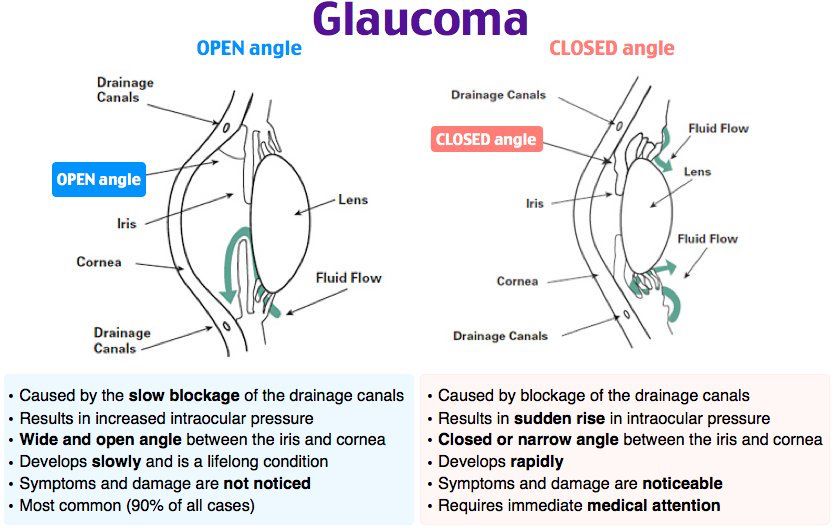
The most common form of AACG involves pupillary block, where the lens comes into close contact with the iris around the pupil, preventing aqueous fluid from moving through. This causes the aqueous fluid to collect behind the iris, making it bow forward and close the drainage angle. As a result, the normal flow of aqueous fluid is disrupted, leading to a rapid rise in intraocular pressure.
Recognizing the Symptoms of Acute Angle-Closure Glaucoma
AACG presents with a constellation of symptoms that can be severe and sudden in onset. These symptoms include:
- Decreased vision
- Seeing halos around bright objects
- Eye pain
- Nausea
Do these symptoms always indicate AACG? While these symptoms are characteristic of AACG, they can also be present in other eye conditions. Therefore, it’s essential to seek immediate medical attention if you experience any of these symptoms, especially if they occur suddenly and are accompanied by severe eye pain.
Risk Factors for Acute Angle-Closure Glaucoma: Who is Most Susceptible?
Several factors can increase an individual’s risk of developing AACG. These include:

- Female gender
- Older age
- Large natural lens (cataract)
- Far-sightedness (Hyperopia)
- Short axial length of the eye
- Dim illumination
- Certain medications that cause pupil dilation in susceptible eyes
Why are females at higher risk for AACG? Women generally have smaller eyes than men, resulting in more crowded drainage angles. This anatomical difference makes them more susceptible to pupillary block and acute closure of the drainage angle.
How does age affect the risk of AACG? As we age, the lens of the eye grows larger, leading to a more crowded anterior segment and narrower drainage angle. This age-related change increases the risk of AACG in older individuals.
The Role of Eye Anatomy in Acute Angle-Closure Glaucoma
The size and structure of an individual’s eye play a significant role in their susceptibility to AACG. People with smaller eyes tend to have more crowded drainage angles, increasing their risk of developing this condition. This anatomical variation explains why far-sighted individuals, who typically have smaller eyes, are at greater risk for AACG.

How does pupil dilation affect the risk of AACG? When the pupil dilates, either due to dim lighting or medication, the bulk of the iris moves towards the angle, making it more crowded and narrower. In susceptible individuals with already narrow angles, this dilation can trigger an acute angle closure event.
Diagnosing Acute Angle-Closure Glaucoma: Tools and Techniques
The diagnosis of AACG involves a comprehensive eye examination and several specialized tests. These may include:
- Tonometry to measure intraocular pressure
- Gonioscopy to examine the drainage angle
- Slit-lamp examination to assess the anterior segment of the eye
- Visual field testing to evaluate peripheral vision
- Optical coherence tomography (OCT) to analyze the optic nerve and retinal nerve fiber layer
What is the significance of gonioscopy in diagnosing AACG? Gonioscopy is a crucial diagnostic tool that allows the ophthalmologist to directly visualize the drainage angle of the eye. This examination helps determine if the angle is open, narrow, or closed, which is essential for diagnosing AACG and planning appropriate treatment.
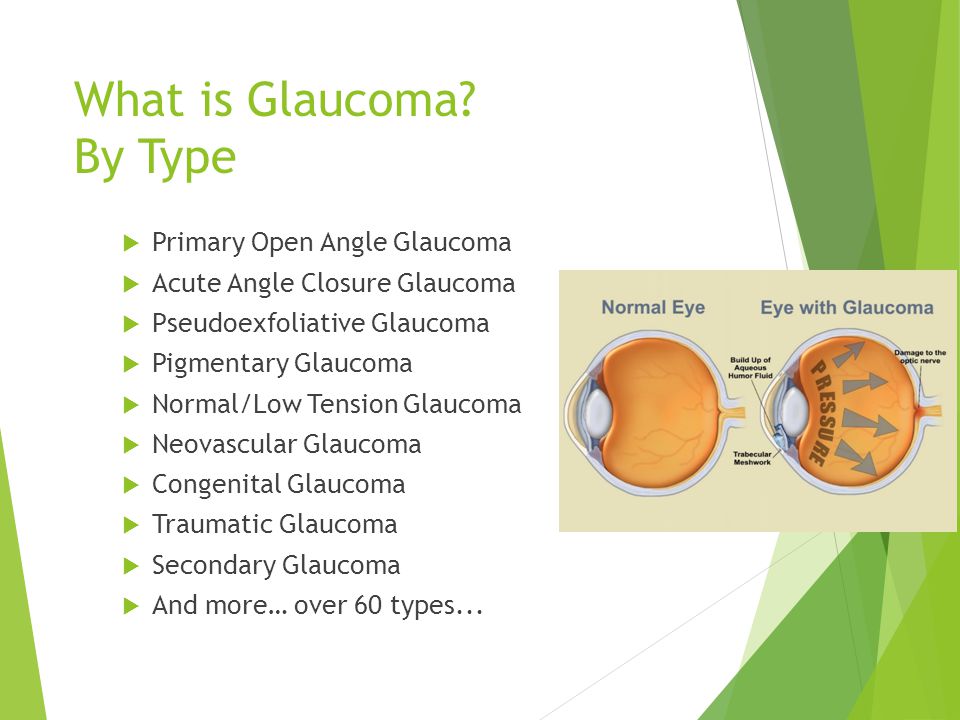
Treatment Options for Acute Angle-Closure Glaucoma
The primary goal of AACG treatment is to rapidly lower the intraocular pressure and relieve symptoms. Treatment options may include:
- Medications: Eye drops and oral medications to reduce IOP and inflammation
- Laser peripheral iridotomy: A procedure to create a small opening in the iris to improve aqueous outflow
- Surgical intervention: In severe cases, surgery may be necessary to create a new drainage channel or implant a drainage device
Why is prompt treatment crucial in AACG? Immediate treatment is essential to prevent permanent vision loss. The high intraocular pressure in AACG can quickly damage the optic nerve if left untreated, leading to irreversible vision impairment.
Preventive Measures and Long-term Management of Acute Angle-Closure Glaucoma
Prevention plays a crucial role in managing the risk of AACG, especially for individuals with known risk factors. Some preventive measures include:
- Regular eye examinations to monitor for narrow angles
- Prophylactic laser peripheral iridotomy for those with critically narrow angles
- Avoiding medications that can cause pupil dilation in susceptible individuals
- Managing underlying conditions that may contribute to AACG risk
How effective is prophylactic laser peripheral iridotomy in preventing AACG? Laser peripheral iridotomy is highly effective in reducing the risk of AACG in individuals with narrow angles. This procedure creates a small opening in the iris, allowing aqueous fluid to bypass pupillary block and flow freely, thereby preventing angle closure.

The Importance of Early Detection and Regular Eye Examinations
Regular eye examinations are crucial for early detection of narrow angles and other risk factors for AACG. These examinations allow ophthalmologists to identify individuals at risk and implement preventive measures before an acute attack occurs. Early detection and intervention can significantly reduce the risk of vision loss associated with AACG.
Lifestyle Considerations for Individuals at Risk of AACG
For individuals identified as having narrow angles or other risk factors for AACG, certain lifestyle considerations may be beneficial:
- Avoiding prolonged periods in dim lighting conditions
- Being cautious with over-the-counter medications that may cause pupil dilation
- Maintaining good overall health to reduce the risk of conditions that may exacerbate AACG risk
- Educating family members about the signs and symptoms of AACG
Can dietary changes affect the risk of AACG? While diet does not directly influence the risk of AACG, maintaining a healthy diet and lifestyle can contribute to overall eye health and potentially reduce the risk of conditions that may indirectly increase AACG risk, such as diabetes or hypertension.

The Role of Genetic Factors in AACG
Research has shown that genetic factors may play a role in an individual’s susceptibility to AACG. Some studies have identified specific genetic variations associated with an increased risk of angle-closure glaucoma. Understanding these genetic factors could potentially lead to improved risk assessment and personalized prevention strategies in the future.
How might genetic testing impact AACG prevention in the future? As our understanding of the genetic basis of AACG improves, genetic testing could potentially be used to identify individuals at high risk for the condition. This could allow for more targeted preventive measures and earlier intervention in susceptible individuals.
Emerging Technologies in AACG Diagnosis and Management
Advancements in medical technology are continually improving our ability to diagnose and manage AACG. Some emerging technologies include:
- Anterior segment OCT for high-resolution imaging of the drainage angle
- Artificial intelligence algorithms for analyzing eye imaging data
- Novel drug delivery systems for improved glaucoma medication administration
- Minimally invasive glaucoma surgery (MIGS) techniques
How might these emerging technologies change the landscape of AACG management? These advancements have the potential to enhance early detection, improve treatment efficacy, and reduce the burden of long-term management for individuals with AACG or at risk of developing the condition.
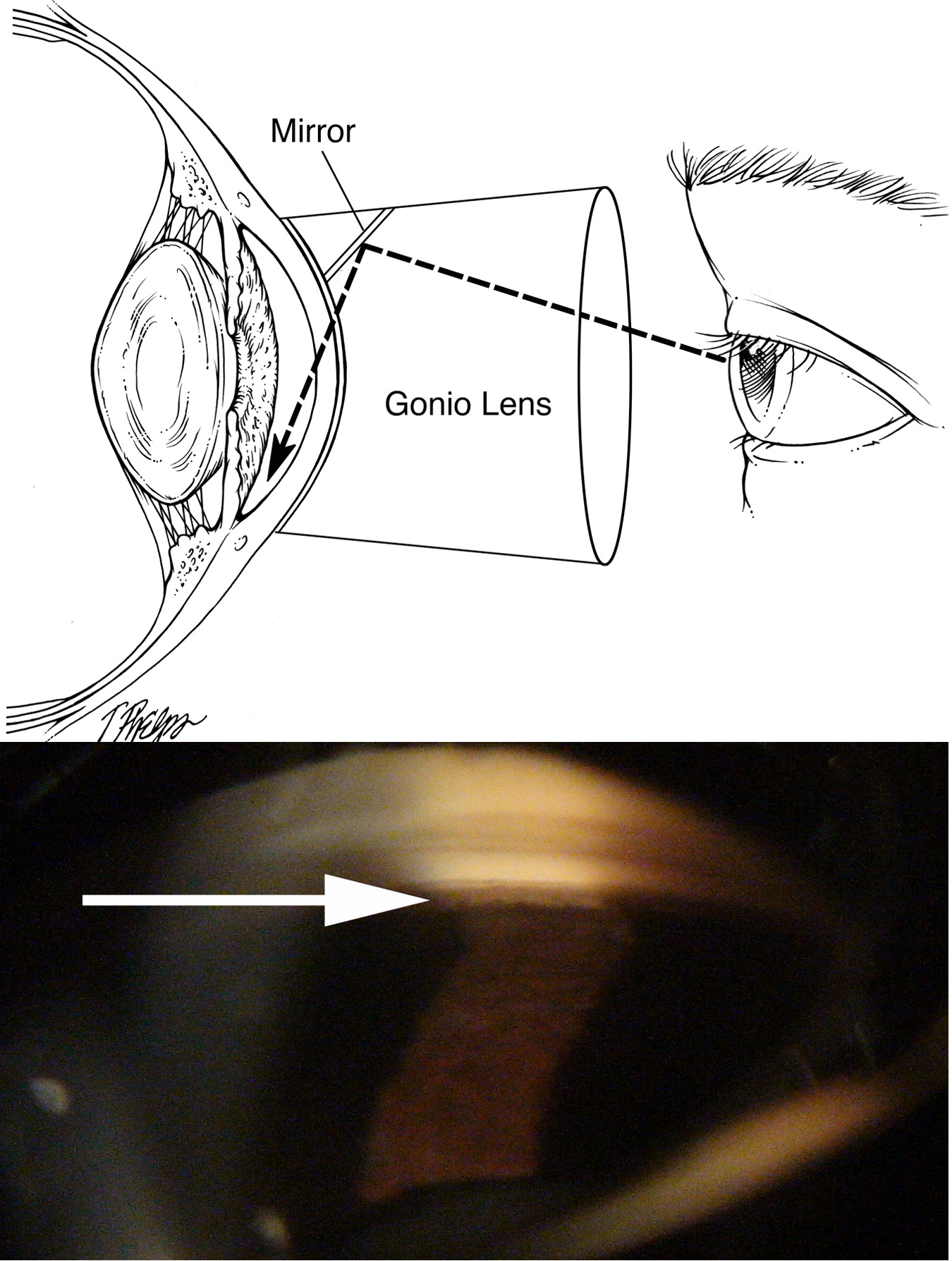
The Global Impact of Acute Angle-Closure Glaucoma
AACG is a significant cause of vision loss worldwide, with its prevalence varying across different populations. In some Asian countries, AACG is more common due to anatomical differences in eye structure. Understanding these demographic variations is crucial for developing targeted public health strategies and allocating resources for prevention and treatment.
Why is AACG more prevalent in certain populations? The higher prevalence of AACG in some Asian populations is thought to be due to anatomical factors, including a shallower anterior chamber and shorter axial length of the eye. These characteristics contribute to a higher risk of angle closure.
Patient Education and Awareness: Key Components in AACG Prevention
Raising awareness about AACG and educating patients about its risk factors and symptoms is crucial for early detection and prevention. Healthcare providers play a vital role in this process by:
- Providing comprehensive information about AACG to at-risk patients
- Educating patients about the importance of regular eye examinations
- Teaching patients to recognize the symptoms of an acute attack
- Emphasizing the importance of seeking immediate medical attention if symptoms occur
How can patient education improve outcomes in AACG? Improved patient awareness can lead to earlier recognition of symptoms and prompt seeking of medical attention, potentially reducing the risk of vision loss from AACG. Additionally, educated patients are more likely to adhere to preventive measures and follow-up care recommendations.
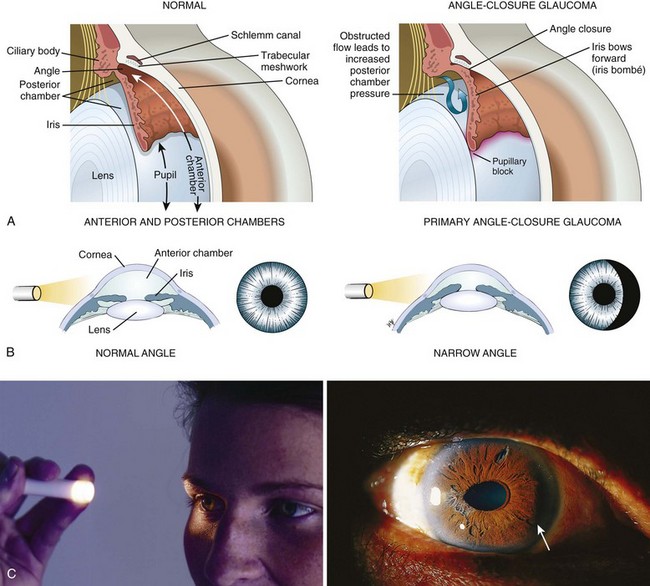
The Psychological Impact of AACG and Its Management
The sudden onset and potentially vision-threatening nature of AACG can have significant psychological impacts on affected individuals. Patients may experience anxiety, depression, or fear of recurrence following an acute attack. Addressing these psychological aspects is an important component of comprehensive AACG management.
What support systems can help patients cope with the psychological impacts of AACG? Support groups, counseling services, and patient education programs can all play important roles in helping patients navigate the emotional challenges associated with AACG. Healthcare providers should be prepared to address these psychological aspects and provide appropriate referrals when necessary.
Future Directions in AACG Research and Treatment
Ongoing research in the field of AACG aims to improve our understanding of the condition and develop more effective prevention and treatment strategies. Some areas of current research include:

- Investigating novel therapeutic targets for lowering intraocular pressure
- Developing more precise methods for identifying at-risk individuals
- Exploring the potential of stem cell therapies for optic nerve regeneration
- Studying the long-term outcomes of different treatment approaches
How might these research directions shape the future of AACG management? Advances in these areas could lead to more personalized treatment approaches, improved prevention strategies, and potentially even ways to reverse vision loss in patients with advanced glaucomatous damage.
In conclusion, acute angle-closure glaucoma is a serious eye condition that requires prompt recognition and treatment to prevent vision loss. By understanding the risk factors, recognizing the symptoms, and implementing appropriate preventive measures, individuals can reduce their risk of developing this condition. Regular eye examinations, patient education, and ongoing research are key components in the fight against AACG and its potentially devastating consequences.
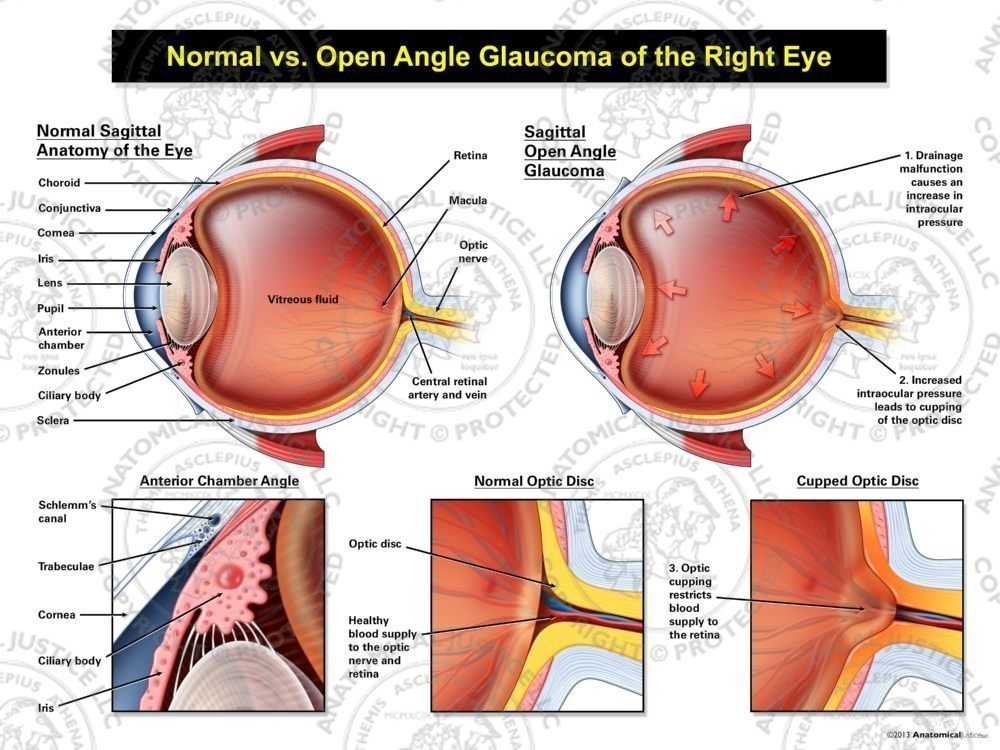
Acute angle closure glaucoma. A Patient’s Guide to Glaucoma
Section 9-A: Introduction to acute angle closure glaucoma
Acute angle closure glaucoma is a serious eye condition in which the drainage angle becomes obstructed such that aqueous humor cannot make its way out of the eye. The iris and cornea become pressed together and consequently, aqueous fluid cannot get to the trabecular meshwork and make its way out of the eye (figure 9-1). The result is a rapid elevation of intraocular pressure (IOP) that causes a constellation of symptoms including decreased vision, seeing halos around bright objects, pain, and nausea (Table 9-1). The intraocular pressure may become dangerously high and prompt treatment is necessary to prevent irreversible vision loss.
The most common form of angle closure glaucoma involves blockage of the pupil by the lens (pupillary block) and occurs in eyes that have narrow drainage angles. Pupillary block occurs when the lens comes in close contact with the iris around the pupil and prevents aqueous fluid from moving through the pupil. Aqueous fluid collects behind the iris and causes it to bow forward and close the drainage angle. The iris bows forward in the periphery and blocks aqueous fluid from reaching the trabecular meshwork and exiting the eye. This abnormal configuration of the iris prevents normal flow of aqueous fluid through the pupil to the trabecular meshwork and causes an acute rise in intraocular pressure (Figure 9-1).
Aqueous fluid collects behind the iris and causes it to bow forward and close the drainage angle. The iris bows forward in the periphery and blocks aqueous fluid from reaching the trabecular meshwork and exiting the eye. This abnormal configuration of the iris prevents normal flow of aqueous fluid through the pupil to the trabecular meshwork and causes an acute rise in intraocular pressure (Figure 9-1).
Figure 9-1. Acute angle closure glaucoma. Left: In an eye with a normal configuration of the anterior segment, the angle between the iris and cornea is wide open (approximately 40˚). Aqueous fluid has free access to the trabecular meshwork and exits the eye unimpeded. Right: In an eye with acute angle closure, the angle between the iris and the cornea is obstructed and closed. Aqueous fluid is trapped within the eye and causes the intraocular pressure to rise rapidly.
Symptoms of acute angle closure glaucoma. |
|---|
| Decreased vision |
| Seeing “halos” |
| Pain |
| Nausea |
Section 9-B: Risk Factors for acute angle closure glaucoma
There is variation in the size of the human eye. Some individuals have eyes that are slightly smaller than the average. In such smaller eyes, there is relatively less space for the normal structures of the eye (ciliary body, lens, and iris) and consequently, these eyes have “crowded” drainage angle. The result is narrower drainage angles with less space between the lens and iris and higher risk for pupillary block and acute closure of the drainage angle (Figure 9-1). The drainage angles of smaller eyes are therefore at higher risk of becoming critically narrow or closed. Consequently, acute angle closure glaucoma occurs most commonly in people with traits that are associated with smaller eyes (Table 9-2).
| Risk factors for acute angle closure glaucoma. |
|---|
| Female gender |
| Older age |
| Large natural lens (cataract) |
| Far-sightedness (Hyperopia) |
| Short axial length of the eye |
| Dim illumination |
| Certain medications that cause the pupil to dilate in susceptible eye |
Acute angle closure glaucoma is more common in females because females have eyes that are generally smaller than those of males. Similarly, angle closure glaucoma occurs more frequently with increased age, because as the lens of the eye grows larger with age, the anterior segment of the eye becomes more crowded and the drainage angle becomes narrower. People with eyes that are physically smaller are generally far-sighted (hyperopic) and require more corrective power for seeing nearby objects than faraway objects. Such far-sighted individuals are at greater risk for acute angle closure glaucoma, because the drainage angle in their smaller eyes is more crowded than in individuals with normal sized eyes.
People with eyes that are physically smaller are generally far-sighted (hyperopic) and require more corrective power for seeing nearby objects than faraway objects. Such far-sighted individuals are at greater risk for acute angle closure glaucoma, because the drainage angle in their smaller eyes is more crowded than in individuals with normal sized eyes.
The risk for pupillary block and angle closure is increased when the pupil is dilated by dim illumination or by medication. As the pupil gets bigger, the bulk of the iris moves towards the angle causing it to become more crowded and narrower. Dilation of the pupils can cause narrow angles in susceptible individuals to become abruptly closed.
When critically narrow angles are observed by an eye doctor, preventative laser surgery (laser peripheral iridotomy) is recommended to reduce the risk of angle closure glaucoma occurring (see Section 9-D).
Section 9-C: Diagnosis of acute angle closure glaucoma
Acute angle closure glaucoma can be diagnosed with an examination by an eye doctor. Some of the common signs of acute angle closure may be recognized by examination of the eye (Table 9-3).
Some of the common signs of acute angle closure may be recognized by examination of the eye (Table 9-3).
| These findings of acute angle closure glaucoma are seen in an examination by an eye doctor. |
|---|
| Cloudy cornea |
| Red eyes |
| Forward bowing iris (narrow drainage angle) |
| Mid-dilation of the pupil |
| High intraocular pressure (several times higher than normal pressure) |
Pupillary block and obstruction of the drainage angle causes the iris to bow forward, which can be recognized with a slit lamp exam by an eye doctor (Figure 9-2). This abnormal configuration of the iris and cornea blocks outflow of fluid from the eye and causes the IOP to become rapidly elevated.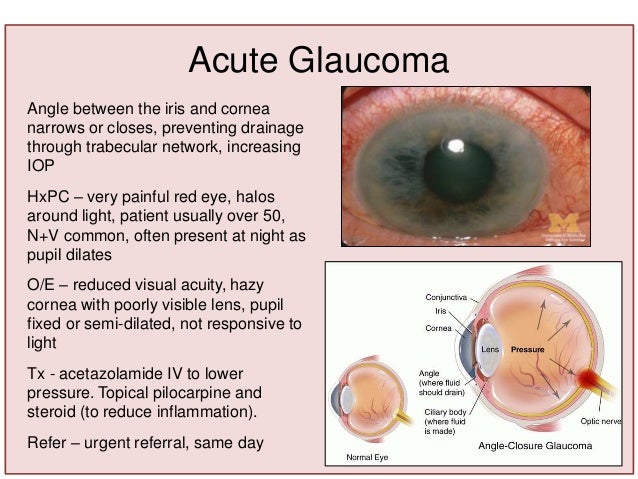
Figure 9-2. Abnormal forward bowing Iris characteristic of acute angle closure glaucoma. A key feature of acute angle closure glaucoma is the abnormal forward position of the iris. Forward bowing of the iris may be observed by an eye doctor with a slit lamp examination. When a straight beam of light is projected on an eye with acute angle closure glaucoma, the beam (indicated by an arrow) appears curved due to the forward bowing of the iris.
Figure 9-3. Acute Angle Closure Glaucoma: External Appearance. Blockage of the drainage angle causes IOP to rise. High pressure results in a constellation of signs seen in acute angle closure glaucoma including redness of conjunctiva (red arrow), haziness of the cornea, and a mid-dilated pupil (white arrow).
When the IOP becomes very high, the “whites” of the eyes become red. High IOP also causes the normally clear cornea to become hazy which results in significant decreases in vision. Changes in the cornea may also cause patients to see halos around bright objects. Finally, high IOP may cause the pupil to become partially dilated and poorly responsive to light (Figure 9-3).
Finally, high IOP may cause the pupil to become partially dilated and poorly responsive to light (Figure 9-3).
Rapid elevation of IOP is a key feature of acute angle closure glaucoma. The pressure may rise as high as several times the normal IOP and can cause permanent and significant vision loss. Consequently, it is crucial to treat acute angle closure glaucoma promptly.
Section 9-D: Treatment of acute angle closure glaucoma
Intraocular pressure may be critically high in acute angle closure glaucoma. The goals of treatment are to lower the pressure as soon as possible and to prevent further attacks. Initially, acute angle closure glaucoma is treated with a range of medicines that may be given as eye-drops or pills. In rare cases intravenous medications may also be used. However, the definitive treatment for most cases of angle closure glaucoma is laser peripheral iridotomy.
In most cases of angle closure glaucoma, medications are used first to lower the eye pressure to a point at which the laser peripheral iridotomy (see Chapter 8-A-2) can safely be performed. While medications may temporarily treat an episode of acute angle closure, laser peripheral iridotomy is necessary to definitively treat and prevent future attacks. The treatments for acute angle closure glaucoma are discussed in more detail below:
While medications may temporarily treat an episode of acute angle closure, laser peripheral iridotomy is necessary to definitively treat and prevent future attacks. The treatments for acute angle closure glaucoma are discussed in more detail below:
Topical medications. Most of the same eye-drops that are used for chronic forms of glaucoma (chapter 7) are also used to treat acute angle closure glaucoma. The combined use of several medications are generally required to sufficiently lower intraocular pressure.
Three classes of medications reduce the production of aqueous fluid (beta blockers, alpha adrenergic agonists, and carbonic anhydrase inhibitors) and thereby lower pressure in the eye. These aqueous suppressant medications are useful in lowering the pressure in acute angle closure glaucoma. Rapid application of a series of beta blockers, alpha adrenergic agonists, and carbonic anhydrase inhibitors eye drops will often lower intraocular pressure sufficiently to to allow definitive treatment with a laser (see below).
Once the eye pressure has been lowered with other medications, cholinergic eye drops may be used to pull the iris centrally in preparation for a laser treatment. The cholinergic eye-drops stretch the iris and make it easier for the laser to produce a hole in the iris (see below).
Oral medications. When topical eye-drops fail to lower intraocular pressure to safe levels, oral medications may be necessary in treating acute angle closure glaucoma. Two forms of oral carbonic anhydrase inhibitors (acetazolamide and methazolamide) can be used to treat acute angle closure glaucoma by reducing the production of aqueous fluid. Occasionally, a hyperosmotic drug (glycerol or isosorbide) may be used. The latter medications help to draw fluid out of the eye and into the bloodstream, thereby lowering the IOP.
Intravenous medications. Intravenous medications may rarely be necessary when topical and oral medications fail to adequately lower the intraocular pressure or when a patient is too sick to take oral medications. Intravenous hyperosmotics (urea or mannitol) may be used in these situations.
Intravenous hyperosmotics (urea or mannitol) may be used in these situations.
Laser treatment (Laser Peripheral Iridotomy). A laser peripheral iridotomy to break the pupillary block and acute closure of the drainage angle should be performed as soon as possible after using medications. The goal of a laser peripheral iridotomy is to produce a hole in the iris to relieve the papillary block and allow aqueous fluid to make its way to the trabecular meshwork, thereby lowering the IOP (Figure 9-4).
A. Normal
B. Pupillary Block. Angle Closure
C. Laser Treatment of Angle-closure (iridotomy)
D. Open angle following laser iridotomy
Figure 9-4. Laser Peripheral Iridotomy. The definitive treatment for acute angle closure glaucoma is laser peripheral iridotomy. A. Normal flow of aqueous humr in an eye with an open drainage angle. B. In acute angle closure glaucoma aqueous humor cannot pass through the pupil (pupillary block). Fluid collects behind the iris causing it to bow forward and close the drainage angle. The obstruction of aqueous humor drainage causes a rapid rise in intraocular pressure. C. The treatment for acute angle closure glaucoma using the laser to produce a hole in the iris (laser iridotomy). D. Aqueous humor can bypass the pupil and make its way to the trabecular meshwork and out of the eye. Bypass of the pupillary block reduces bowing of the iris and opens the drainage angle.
In acute angle closure glaucoma aqueous humor cannot pass through the pupil (pupillary block). Fluid collects behind the iris causing it to bow forward and close the drainage angle. The obstruction of aqueous humor drainage causes a rapid rise in intraocular pressure. C. The treatment for acute angle closure glaucoma using the laser to produce a hole in the iris (laser iridotomy). D. Aqueous humor can bypass the pupil and make its way to the trabecular meshwork and out of the eye. Bypass of the pupillary block reduces bowing of the iris and opens the drainage angle.
The small hole in the iris created by laser peripheral iridotomy is not easily recognized by the naked eye but is easily seen by an ophthalmologist during an eye exam (Figure 9-5).
Figure 9-5. Laser peripheral iridotomy (LPI). The laser treatment for acute angle closure glaucoma creates a small hole in the iris (arrow) that is visible with an eye examination.
Section 9-E: Prevention
Before any attacks occur (prevention for both eyes). Critically narrow drainage angles may be recognized prior to an attack of acute angle closure. Such drainage angles may be identified by an eye doctor by gonioscopy (Chapter 6-C). When detected, critically narrow drainage angles need treatment with a laser peripheral iridotomy (see above) to prevent attacks of acute angle closure glaucoma. In most cases laser peripheral iridotomy is performed in one eye at a time, within a few weeks of each other.
After an attack (prevention in the other eye). When a patient has an attack of acute angle closure glaucoma in one eye, it is treated emergently. In many cases, the fellow eye also has a critically narrow drainage angle and is at high risk for acute angle closure as well. A laser peripheral iridotomy should be performed to prevent acute angle closure in the fellow eye as soon as the eye with acute angle closure becomes stable after treatment.
Chapter 9. References
Allingham RR, et al., editors. Shields’ Textbook of Glaucoma, ed. 5. Philadelphia: Lippincott Williams & Wilkins, 2005. pp. 217-234.
Alward WLM. Glaucoma. St. Louis: Mosby, 2000. pp. 141-154.
Simmons RB, Montenegro MH, Simmons RJ. “Primary angle-closure glaucoma”. In Tasman W ed. Duane’s Clinical Ophthalmology, Lippincott Williams & Wilkins, 2005. Chapter 53.
Chapter 8 |
Chapter 10
Acute Angle-Closure Glaucoma – Zero To Finals
Glaucoma refers to the optic nerve damage that is caused by a significant rise in intraocular pressure. The raised intraocular pressure is caused by a blockage in aqueous humour trying to escape the eye.
The raised intraocular pressure is caused by a blockage in aqueous humour trying to escape the eye.
Acute angle-closure glaucoma occurs when the iris bulges forward and seals off the trabecular meshwork from the anterior chamber preventing aqueous humour from being able to drain away. This leads to a continual build-up of pressure in the eye. The pressure builds up particularly in the posterior chamber, which causes pressure behind the iris and worsens the closure of the angle.
Acute angle-closure glaucoma is an ophthalmology emergency. Emergency treatment is required to prevent permanent loss of vision.
Risk Factors
The risk factors are slightly different to open-angle glaucoma:
- Increasing age
- Females are affected around 4 times more often than males
- Family history
- Chinese and East Asian ethnic origin.
 Unlike open-angle glaucoma, it is rare in people of black ethnic origin.
Unlike open-angle glaucoma, it is rare in people of black ethnic origin. - Shallow anterior chamber
Certain medications can precipitate acute angle-closure glaucoma:
- Adrenergic medications such as noradrenalin
- Anticholinergic medications such as oxybutynin and solifenacin
- Tricyclic antidepressants such as amitriptyline, which have anticholinergic effects
Presentation
The patient will generally appear unwell in themselves. They have a short history of:
- Severely painful red eye
- Blurred vision
- Halos around lights
- Associated headache, nausea and vomiting
Examination
- Red-eye
- Teary
- Hazy cornea
- Decreased visual acuity
- Dilatation of the affected pupil
- Fixed pupil size
- Firm eyeball on palpation
Initial Management
NICE CKS 2019 say patients with potentially life-threatening causes of red eye should be referred for same-day assessment by an ophthalmologist. If there is a delay in admission, whilst waiting for an ambulance:
If there is a delay in admission, whilst waiting for an ambulance:
- Lie patient on their back without a pillow
- Give pilocarpine eye drops (2% for blue, 4% for brown eyes)
- Give acetazolamide 500 mg orally
- Given analgesia and an antiemetic if required
Pilocarpine acts on the muscarinic receptors in the sphincter muscles in the iris and causes constriction of the pupil. Therefore it is a miotic agent. It also causes ciliary muscle contraction. These two effects cause the pathway for the flow of aqueous humour from the ciliary body, around the iris and into the trabecular meshwork to open up.
Acetazolamide is a carbonic anhydrase inhibitor. This reduces the production of aqueous humour.
Secondary Care Management
Various medical options can be tried to reduce the pressure:
- Pilocarpine
- Acetazolamide (oral or IV)
- Hyperosmotic agents such as glycerol or mannitol increase the osmotic gradient between the blood and the fluid in the eye
- Timolol is a beta-blocker that reduces the production of aqueous humour
- Dorzolamide is a carbonic anhydrase inhibitor that reduces the production of aqueous humour
- Brimonidine is a sympathomimetic that reduces the production of aqueous fluid and increase uveoscleral outflow
Laser iridotomy is usually required as a definitive treatment. This involves using a laser to make a hole in the iris to allow the aqueous humour to flow from the posterior chamber into the anterior chamber. The relieves pressure that was pushing the iris against the cornea and allows the humour the drain.
This involves using a laser to make a hole in the iris to allow the aqueous humour to flow from the posterior chamber into the anterior chamber. The relieves pressure that was pushing the iris against the cornea and allows the humour the drain.
Last updated April 2019
Acute attack of glaucoma – what is it, symptoms, diagnosis and treatment in the clinic
Doctor checked:
Pashinova Nadezhda Fedorovna
What is an acute attack of glaucoma?
Acute glaucoma is a dangerous condition that can result in permanent loss of vision and blindness. Such an attack develops due to a sudden and sharp increase in intraocular pressure, which is typical for angle-closure glaucoma, a disease caused by blocking access to the natural drainage system of the eye.
The risk of an acute attack is highest for the older generation – those who have crossed the 60-year mark. Although it can be diagnosed in people of any age, from infancy.
What factors can trigger an attack?
The following factors can provoke an acute attack of glaucoma:
- increased physical activity;
- prolonged work requiring tilting of the head;
- strong negative emotions, excitement, stress;
- increase in blood pressure;
- eye injuries;
- the use of certain drugs – certain types of antidepressants, eye drops to dilate the pupil, nasal drops that have a vasoconstrictive effect, etc.
 ;
; - consumption of alcohol, salty or pickled foods;
- one-time use of large amounts of liquid.
However, an acute attack of glaucoma can begin for no apparent reason, the specific triggers of this condition are not fully understood to date.
Symptoms of an acute attack of glaucoma
In view of the risk of developing serious complications, it is extremely important to recognize an acute attack of glaucoma in time – and take measures to stop it as soon as possible.
Patients with an acute glaucoma attack have:
Differences between a glaucoma attack and other dangerous conditions
The symptoms of an acute glaucoma attack are often misinterpreted. A person experiencing such a condition, or his relatives, may regard what is happening as an exacerbation of a migraine that really affects the eye area and is often accompanied by vomiting and temporary visual impairment, or, for example, as a heart problem, due to which the necessary ophthalmological care is delayed. Treatment for other diseases begins, which only aggravates the situation.
Treatment for other diseases begins, which only aggravates the situation.
However, it is still possible to distinguish a migraine attack or heart problem from an attack of glaucoma. The following signs indicate that ophthalmological care is urgently needed:
- clouding of the cornea;
- immobility of the pupil and hardening of the eye;
- immobility of the pupil and hardening of the eye;
- marked redness of the eyes.
Instead of black, the pupil becomes greenish in acute glaucoma. There may also be a decrease in the corneal reflex, manifested by the rapid closure of the eyelids as a reaction to the mechanical impact on the cornea.
How to deal with an acute attack of glaucoma?
Intraocular pressure in patients with an acute attack of glaucoma is increased (up to 70–100 mm Hg), the eye is indurated, giving the impression of a “stone”.
The main goal of treatment for an acute attack of glaucoma is to reduce intraocular pressure and normalize blood circulation in the eye to restore nutrition to the retina and optic nerve.

 ;
;